We're living in a digital world, where paper is on the way of disappearance. Printed newspapers are less and less sought after for a good reason, hard copy books are also less these days, printed money is also going to disappear because people are using the digital version of these things. However, some of the items already printed out won't disappear and we have to make sure to take good care of them, to try to preserve them for future generations, as this is our history and heritage as well.
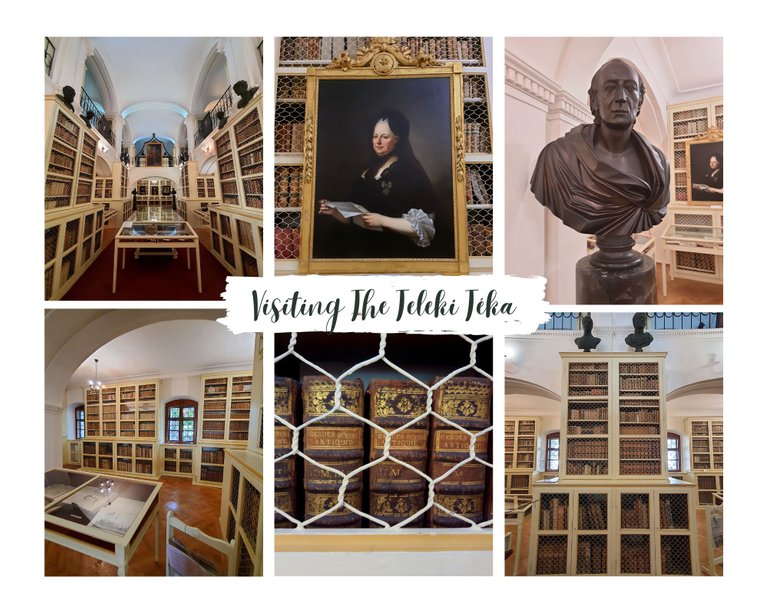
This week I had the pleasure to visit an old library, that now is functioning as a museum. It is the Teleki–Bolyai library of Targu Mures, which is commonly known as Teleki Téka, Teleki Library in English. The museum is situated at the Bolyai street No. 17, which is at a walking distance from the city center.
The Teleki Library (Hungarian: Teleki Téka, Romanian: Biblioteca Teleki-Bolyai), also known as Teleki-Bolyai Library and Bibliotheca Telekiana, is a historic public library and current museum in Târgu-Mureş, Romania. One of the richest Transylvanian collections of cultural artefacts, it was founded by the Hungarian Count Sámuel Teleki in 1802, at the time when Transylvania was part of the Habsburg monarchy, and has been open to the reading public ever since. It was among the first institutions of its kind in the Kingdom of Hungary.
It houses over 200,000 volumes, of which many are rarities, constituting a comprehensive scientific database. The book collection is divided into several smaller libraries, of which the two main donations are the original 40,000-volume Teleki Library and the 80,000-volume Bolyai Library; the rest, grouped as the Miscellaneous Collection, is made up of several private libraries, volumes previously held by religious schools and those of a Franciscan monastery. Overall, the library constitutes a collection of most traditional types of Transylvanian book. source
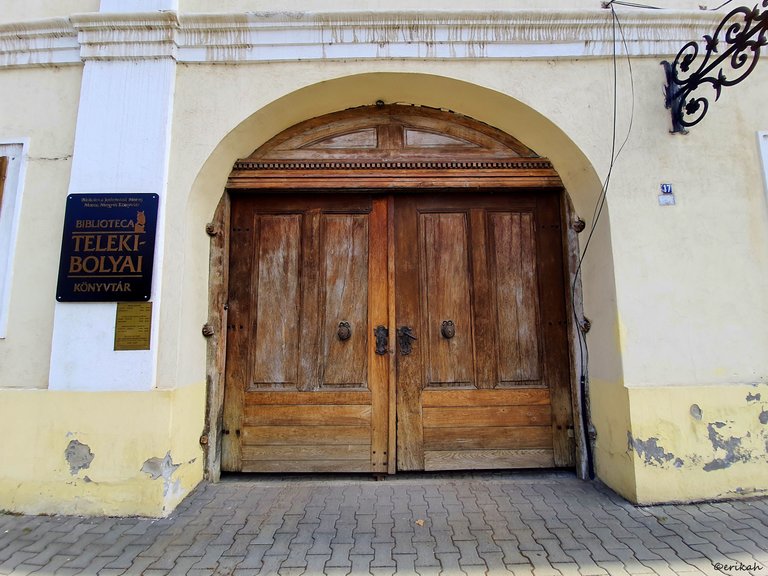
As you can see, it is not an usual library, where you can borrow a book and take it home. It's a museum now that is open to the public. There's a reading room, where I suppose you can consult certain books, but without taking them home.
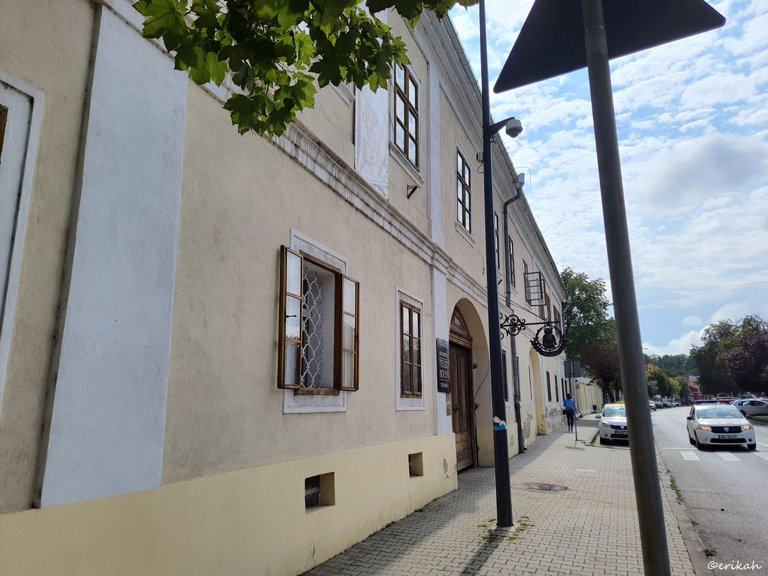
The building is an old one, that looks interesting from outside, for those who like old buildings. It is interesting in the inside too :)
It is definitely interesting for me as I love old architecture and after visiting the inside, I can say I'm grateful to the Wesselényi family, for donating it to Teleki.
Teleki inherited the 17-18th century Baroque building in which the library is housed from the Wesselényi family. Inside the wing built between the years 1799 and 1802, books are still stored in accordance to the original guidelines. source
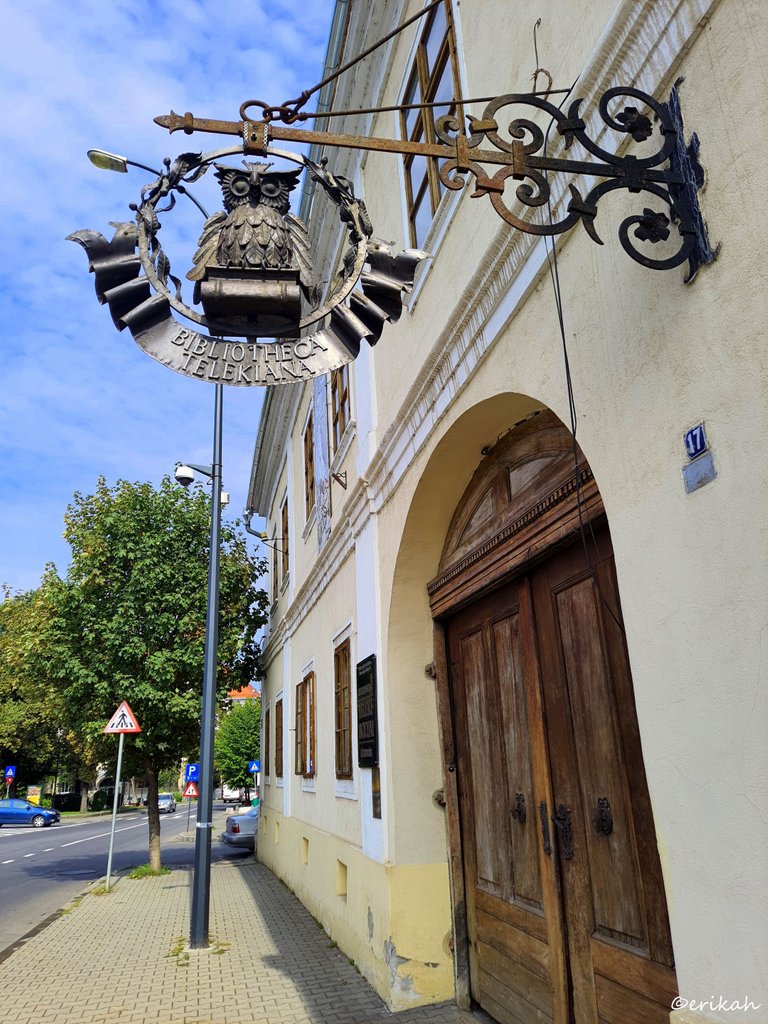
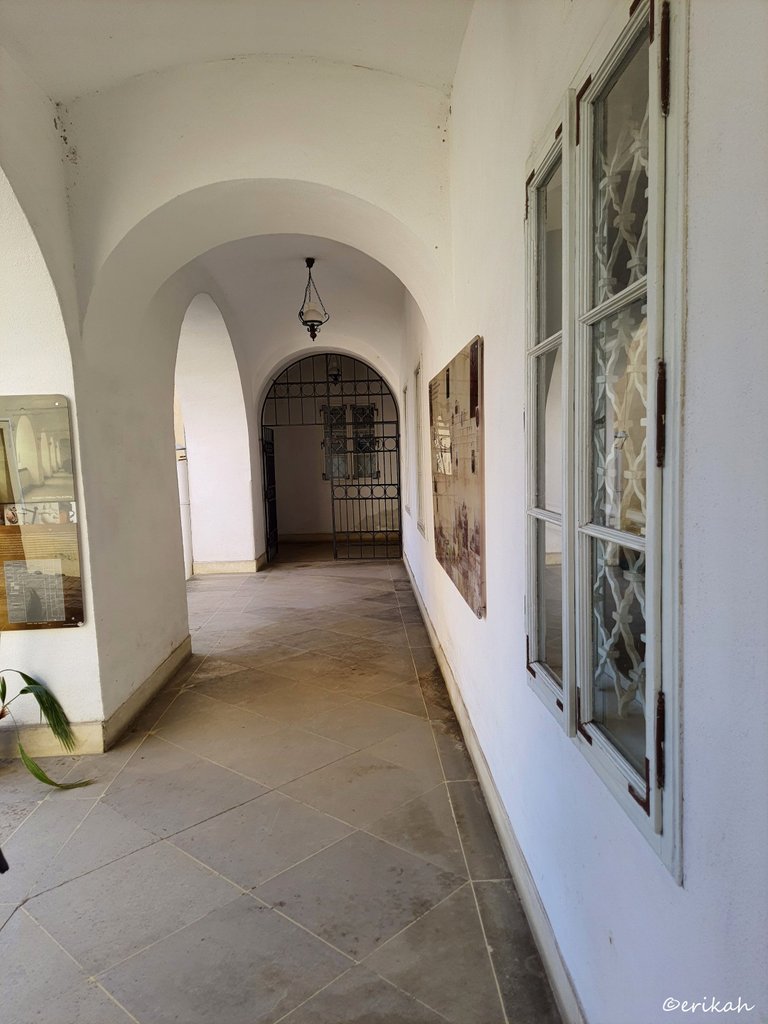
The library is open from Tuesday to Friday, between 10am and 6pm and on Saturday, between 10am and 4pm. I didn't know if the entry is free or I have to pay, but luckily the entry was free. However, I've read somewhere that photographing is not allowed. This is a traveler's biggest fear and disappointment too as we live in a digital era, everyone has a cellphone and every cellphone has a camera, so taking photos is available for everyone now. I'm always asking at the entrance, if photographing is allowed, to avoid any rule breaking. There are cameras everywhere, so you can't hide. To my surprise, I was told it is allowed without the flesh. Perfect, I thought, it works for me as it's better than nothing.
At the entrance I was told to wait for the guide. A lady came, who opened the museum, let us in and set down next to the door and stayed there till we left. Turns out she wasn't a guide, she was more like a security person as she gave us a printed paper with the library history and that was all. I was more than happy to know we would be alone, with no other visitors around as that's the best setup a photographer can ask for.

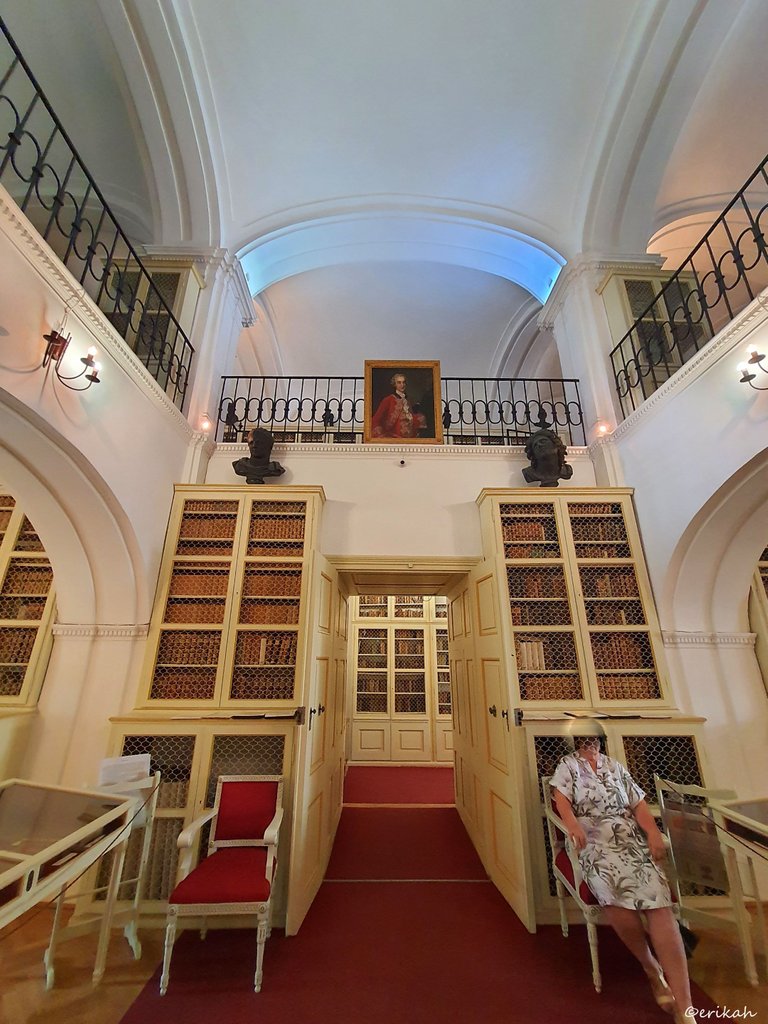
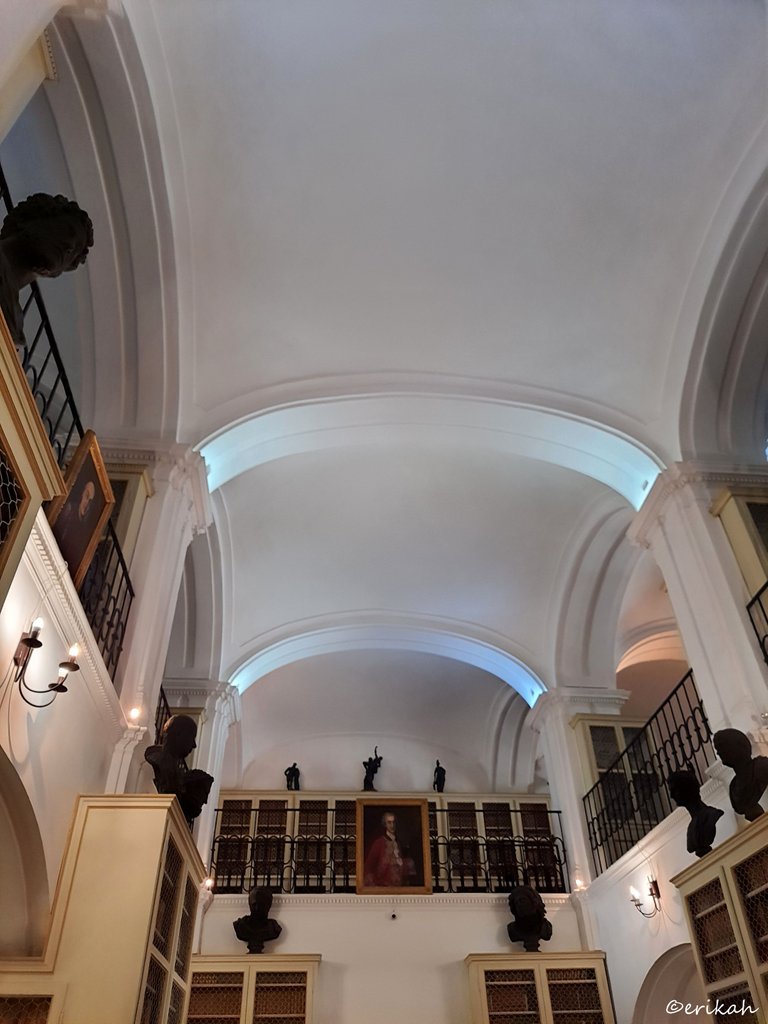
Stepping into the library, this is the beautiful view that surprises you. The arched room is beautiful in its own, but all the old books, the furniture, the paintings and the sculptures added make it spectacular.
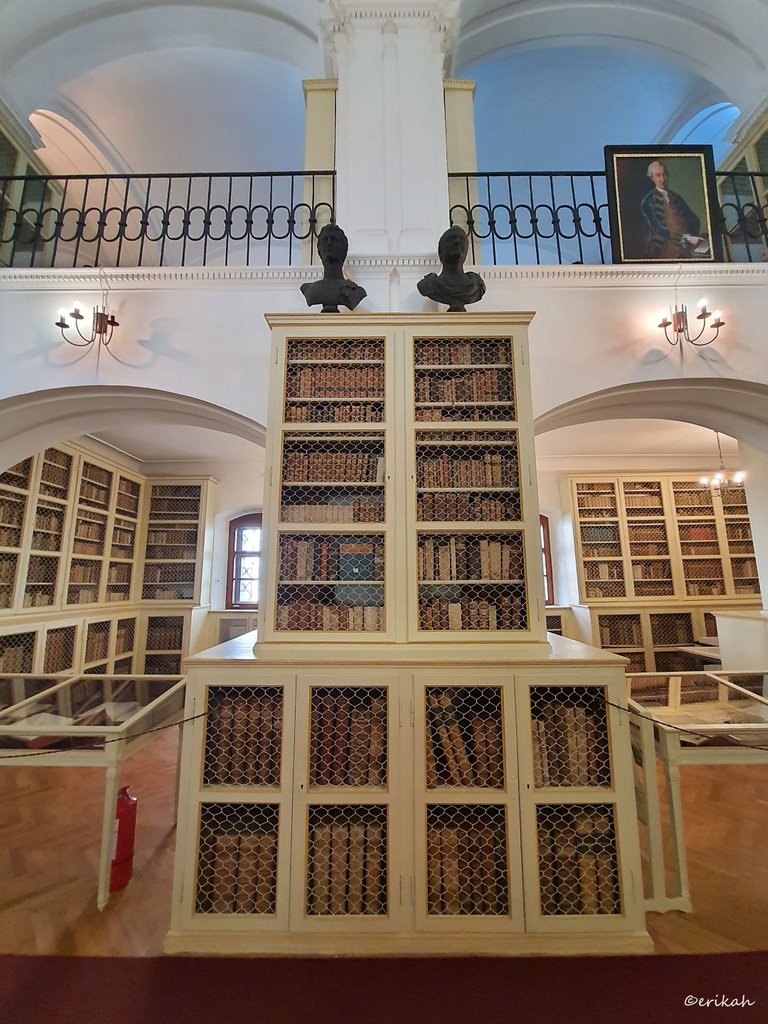
Unlike in other libraries, books are all stored in cabinets, some with glass doors and all with a protective net on the doors.
When you enter, the first thing you notice is a constant noise, like an air conditioning or similar, which is not far from the truth, but it's more than that.
It is commonly known that paper is very sensitive to humidity and light as well. Therefore, room temperature and humidity must be kept at the same level constantly, in order to protect them. There were humidifiers and air conditioning machines but I could not see them, only hear them.
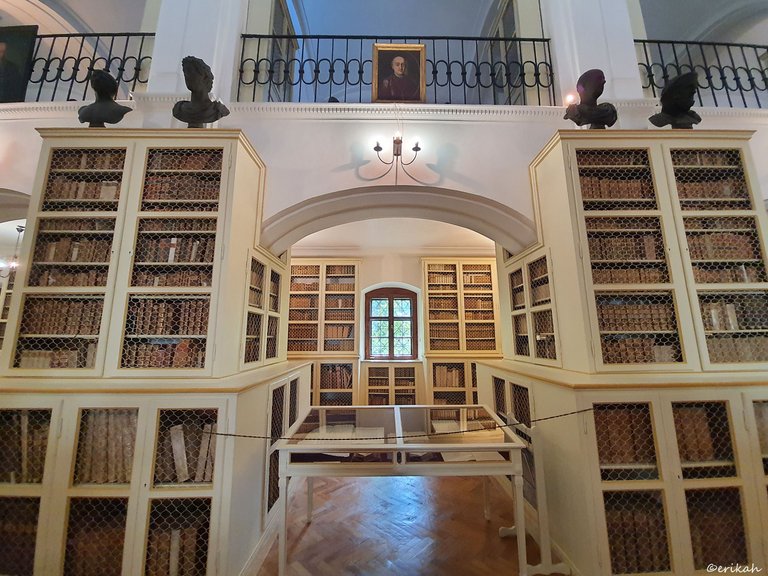
There are three isles but only the main one is open to visitors, the side isles you can only see through these arched entrances. There's a top floor as well, also closed to visitors.
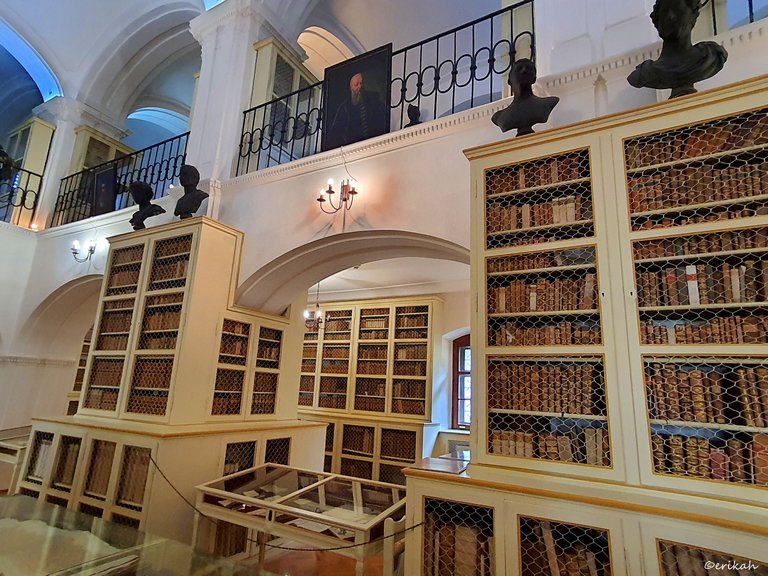
On top of each cabinet there are one or two sculptures, featuring famous people who have contributed in some way to this library. Unfortunately I could not find the names of the people, there may be a label on the sculptures, but it was impossible to see it from where I was standing. There were several paintings as well, most likely portraits of those who had also contributed or helped to grow the collection or the library.
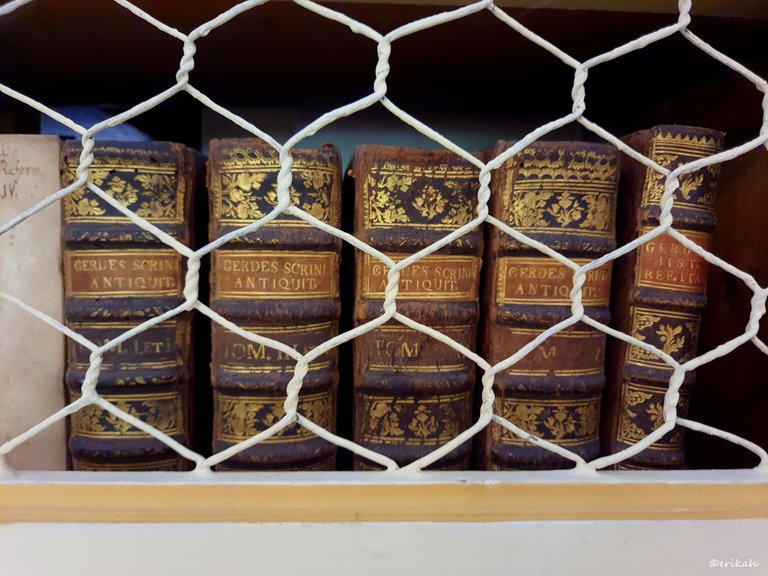
Its founder, Count Sámuel Teleki de Szék (1739–1822) was one of the most learned book collectors of the time. From the very beginning, he intended his collection as a public library, and developed it throughout his life; he remained a committed and active bibliophile despite his time-consuming administrative career — he was Chancellor of Transylvania from 1791 until his death — building on his relations with all important European printing and publishing houses, and purchasing all important works published between the invention of the movable type and the early 19th century.
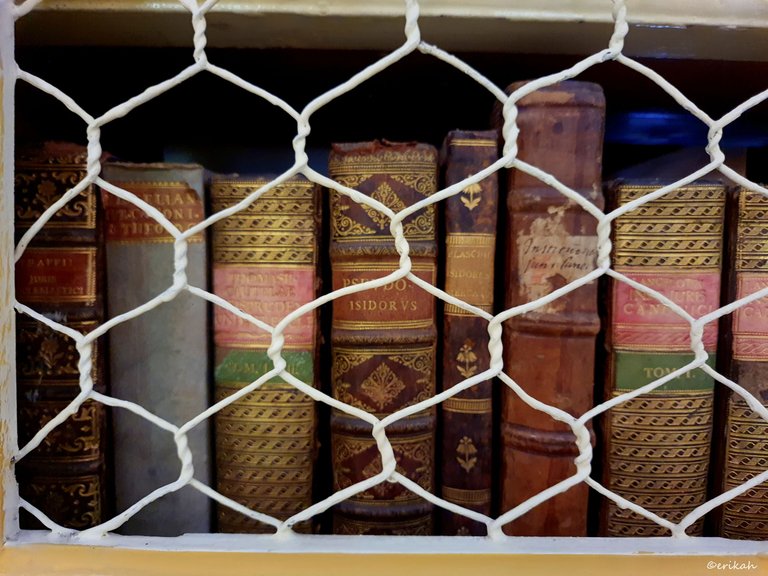
Back in those days books were not for every pocket. Today we have paperback and hard cover, but in those days books had leather cover with gold-plated letters. Obviously there was no gold used in the process, but the color of gold symbolized high quality. Needless to say only a few, mostly nobles could afford to acquire these books, let alone have a private collection. This is why a library like this was a huge help for those eager to learn. These books were the only source of information as radio and television came much later. Some of these books traveled from the other end of the world and huge sacrifices were made to bring them here.
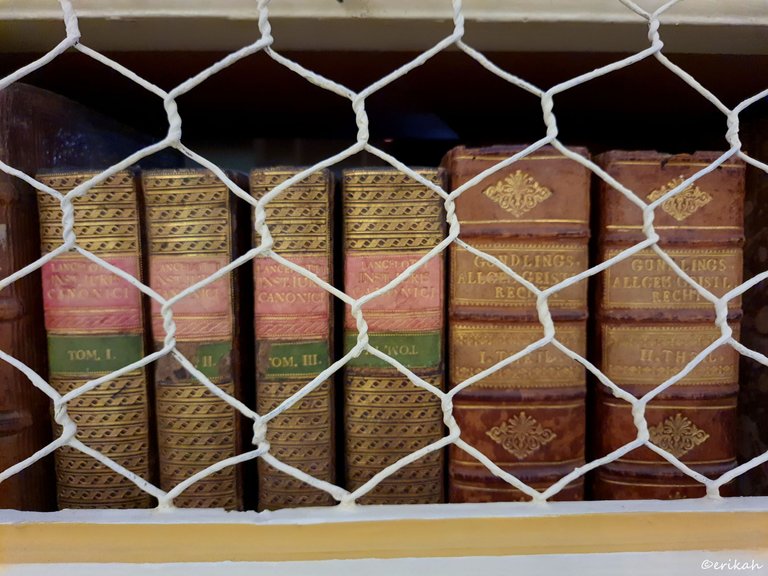
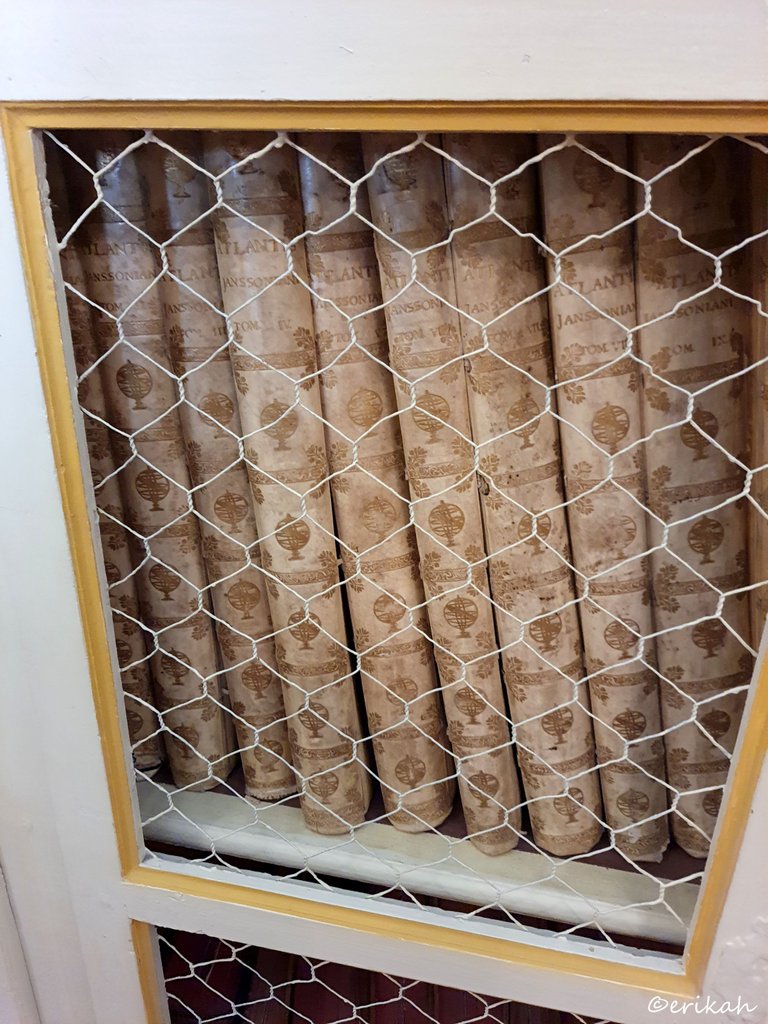
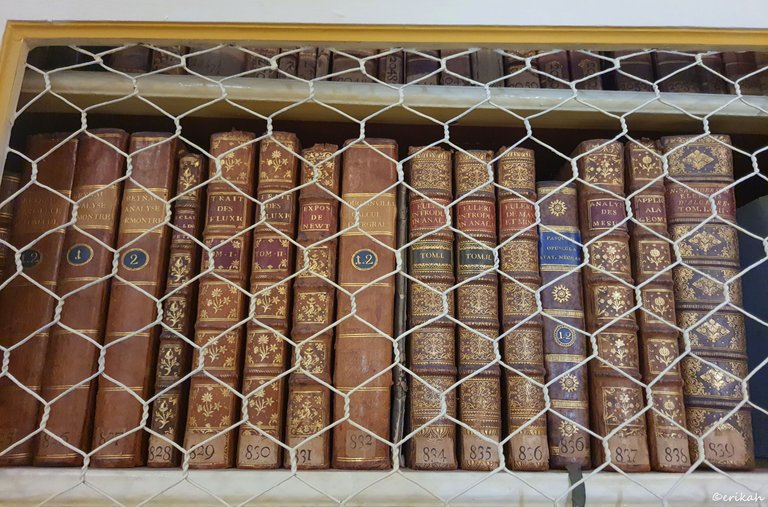
These books are not only in Hungarian, there are books written in German, Latin, French, English, Romanian and who knows in how many other languages.
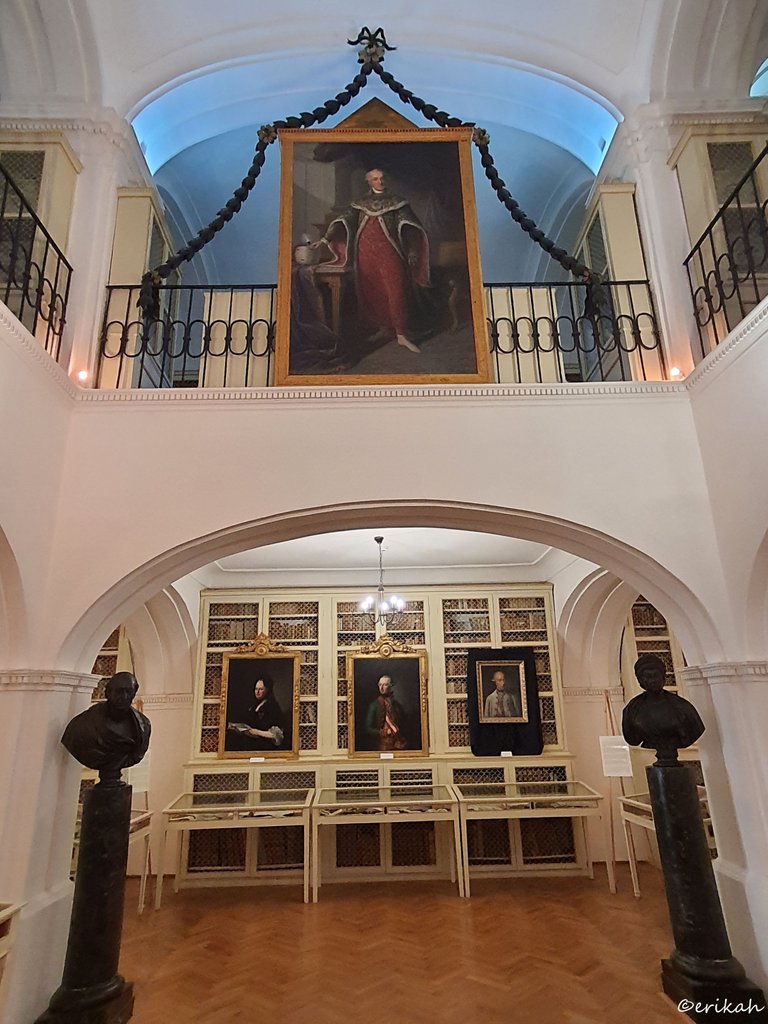
This part of the library was like an altar, if I can say that.

Maria Teresia's portrait, ruler of the Habsburg dominions between 1740 and 1780, painted by Joseph Hickel in 1779. Looking from where I was standing (not very close as obviously you can't go near the painting, as a measure of protection), the painting looked like a photograph and I'm telling you this without any exaggeration. I had a close look and the details were absolutely amazing. I looked at her hands, how she was holding that letter or piece of document and how her hands had a shadow, even her nails looked natural.
Now you have to know that back in those days, nobles and rulers may not looked like the paintings portraying them. The painter who got the commission to do the portrait had a very difficult job as he could not show reality as it was, instead he had to make them look beautiful, handsome if they were men and younger as well. Otherwise he risked having his head on the chopping board. This is why Auguste Rodin, the famous French sculpture was struggling to get accepted by the society for years, but that's another story, for another post.
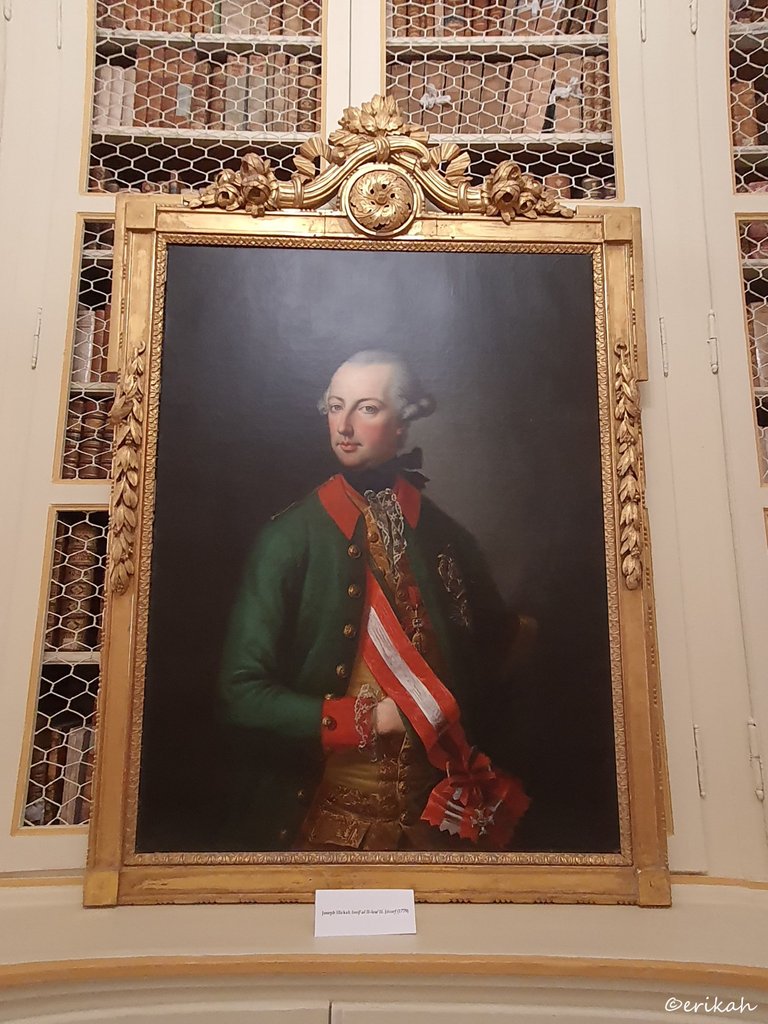
Joseph II, Holy Roman Emperor, painted by the same painter, in 1779. The funny thing is, photos were non existent in those days, so the only image left behind by these rulers, were the paintings.
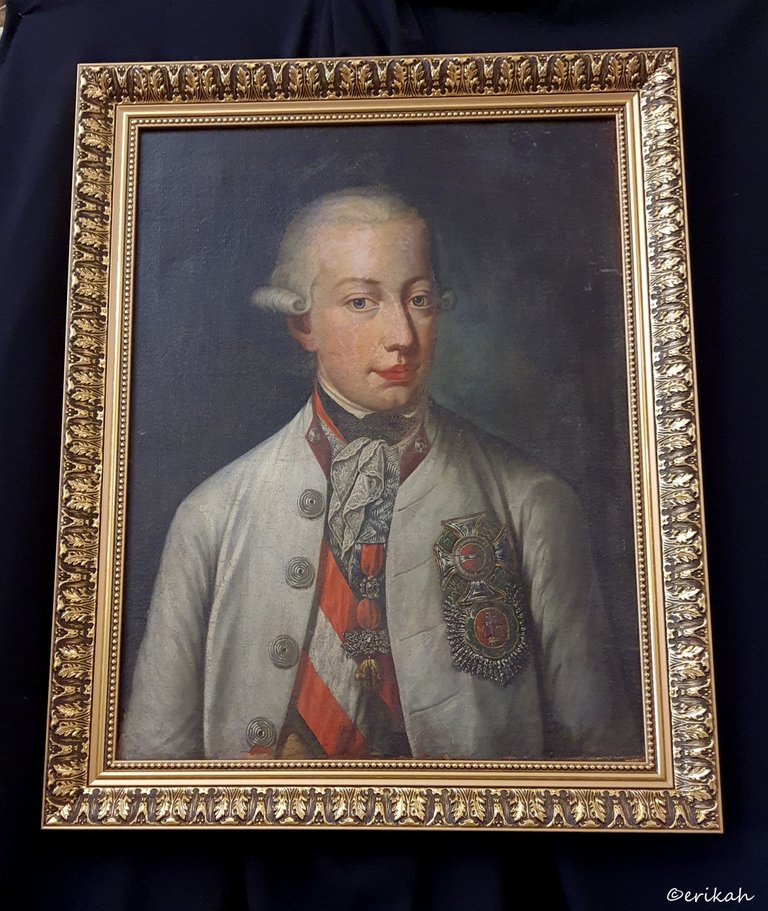
Leopold II, Holy Roman Emperor. Leopold II and Joseph II were both Maria Theresa's sons.
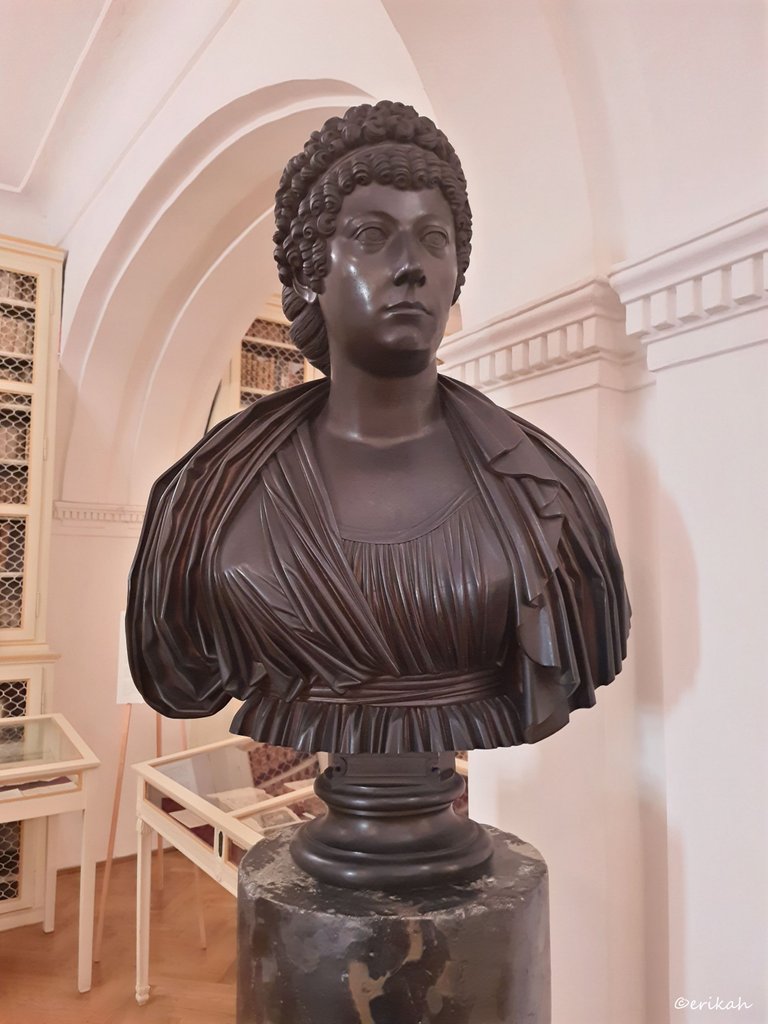
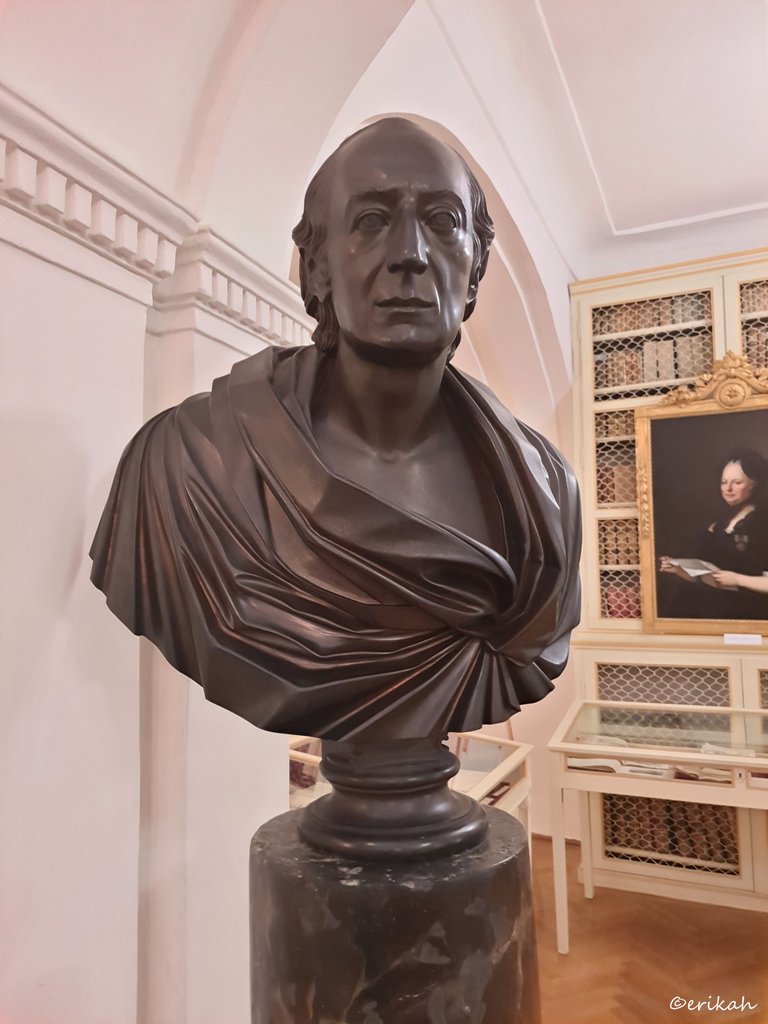
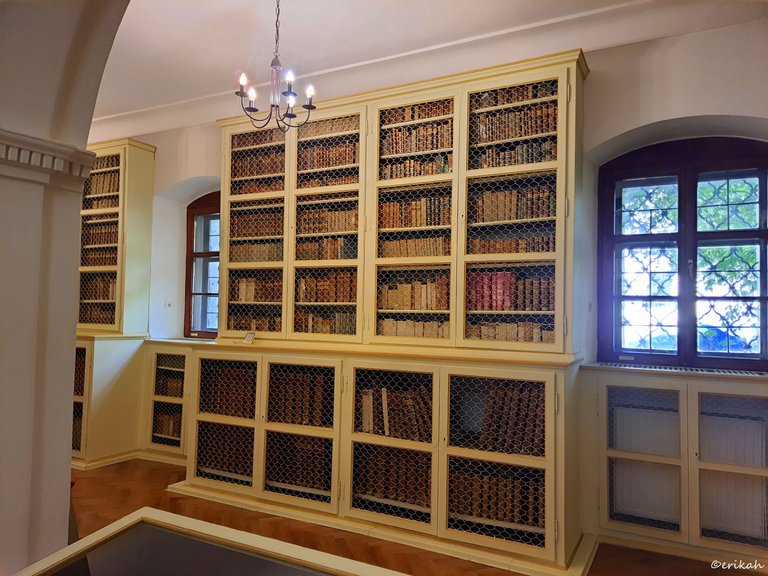
I was standing in the library, tying to imagine what life was back in those days when these books could be borrowed. The dress code was definitely very different, women would not go in dressed in jeans for sure :) I don't even know if women were among the readers as women's social status was different those days. In any case, I would have loved to be able to take a book in my hand (wearing gloves of course) and read a few pages, enjoying the silence, while nothing reminded me of the passing time or the present. Would have been like a travel back in time. Maybe one day. You never know.
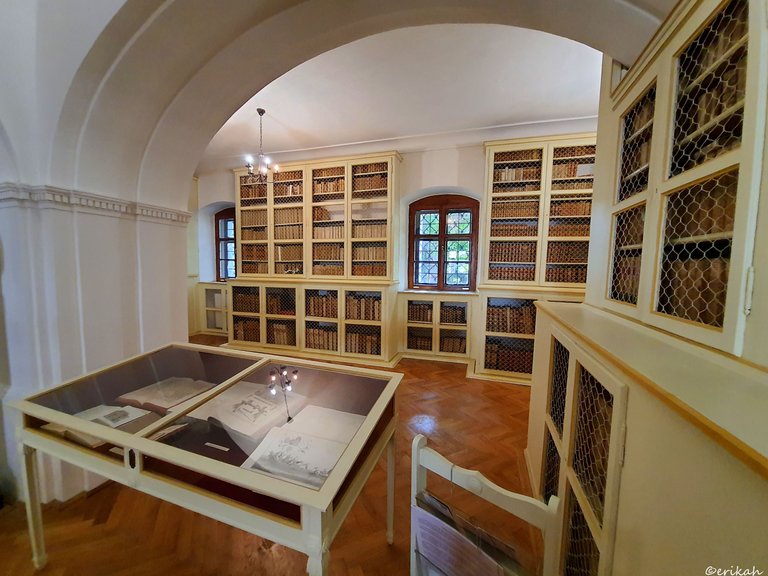
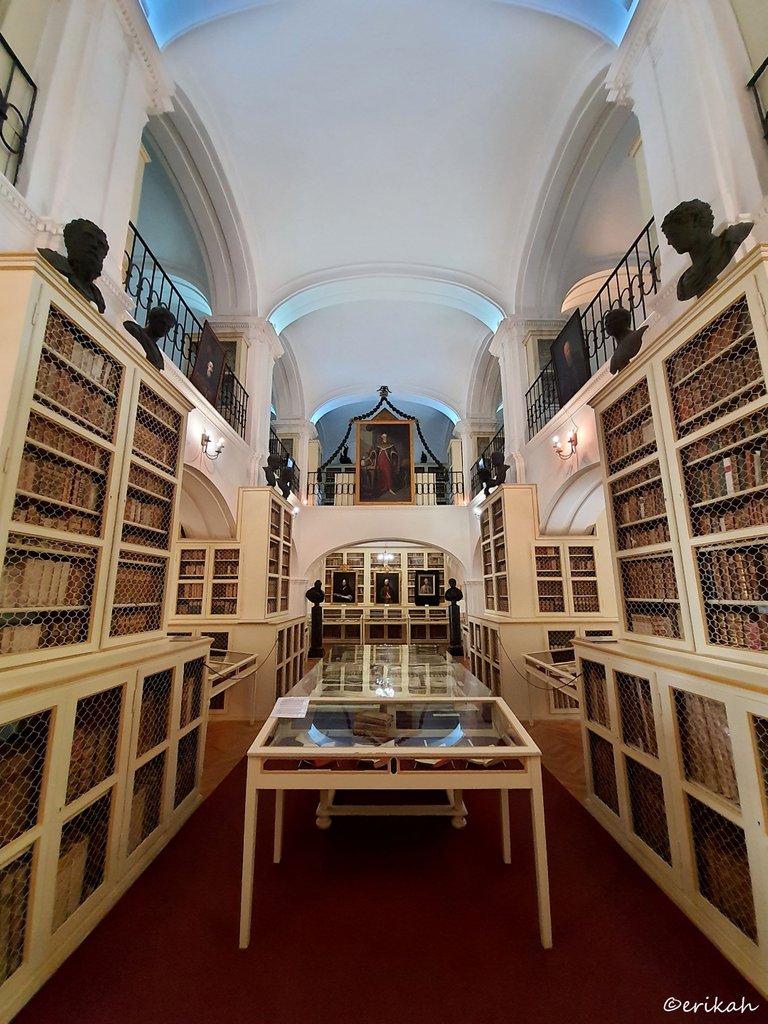
I'm glad this beauty could survive the destruction of the communist era and it was possible to keep it in good condition.
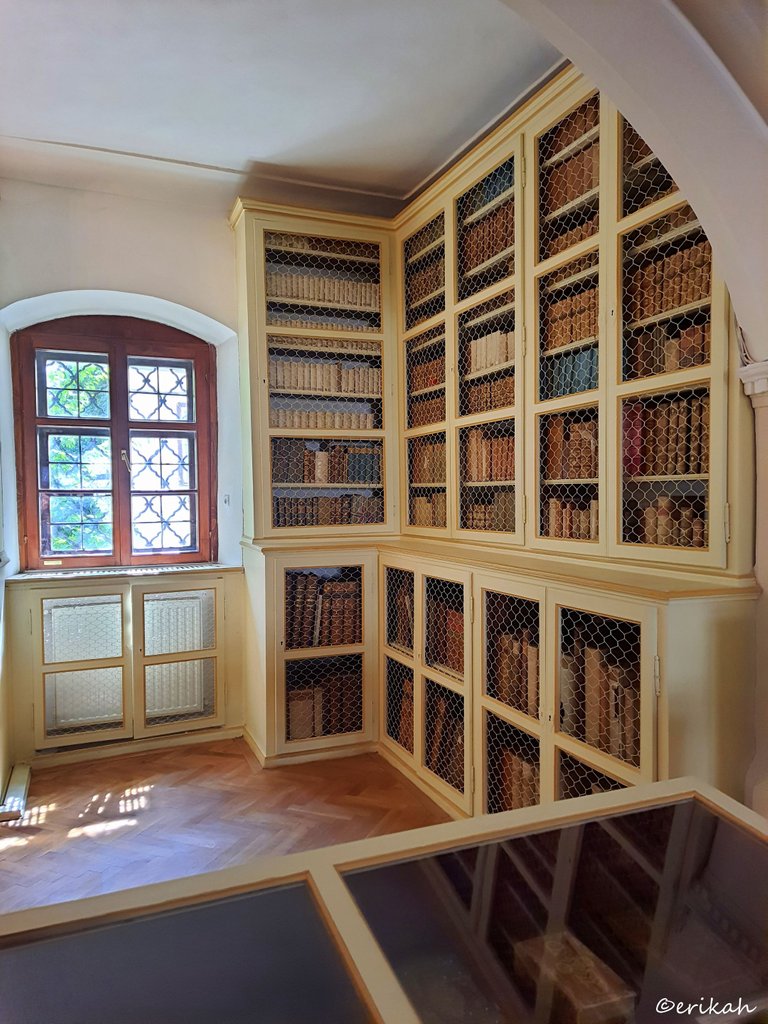
Next time I'm going to show you the book collection that was displayed, with some very old and rare pieces.

If you're a newbie, you may want to check out these guides:
- Communities Explained - Newbie Guide
- Cross Posting And Reposting Explained, Using PeakD
- Hive Is Not For Me
- How To Pump Your Reputation Fast - Newbie Guide


